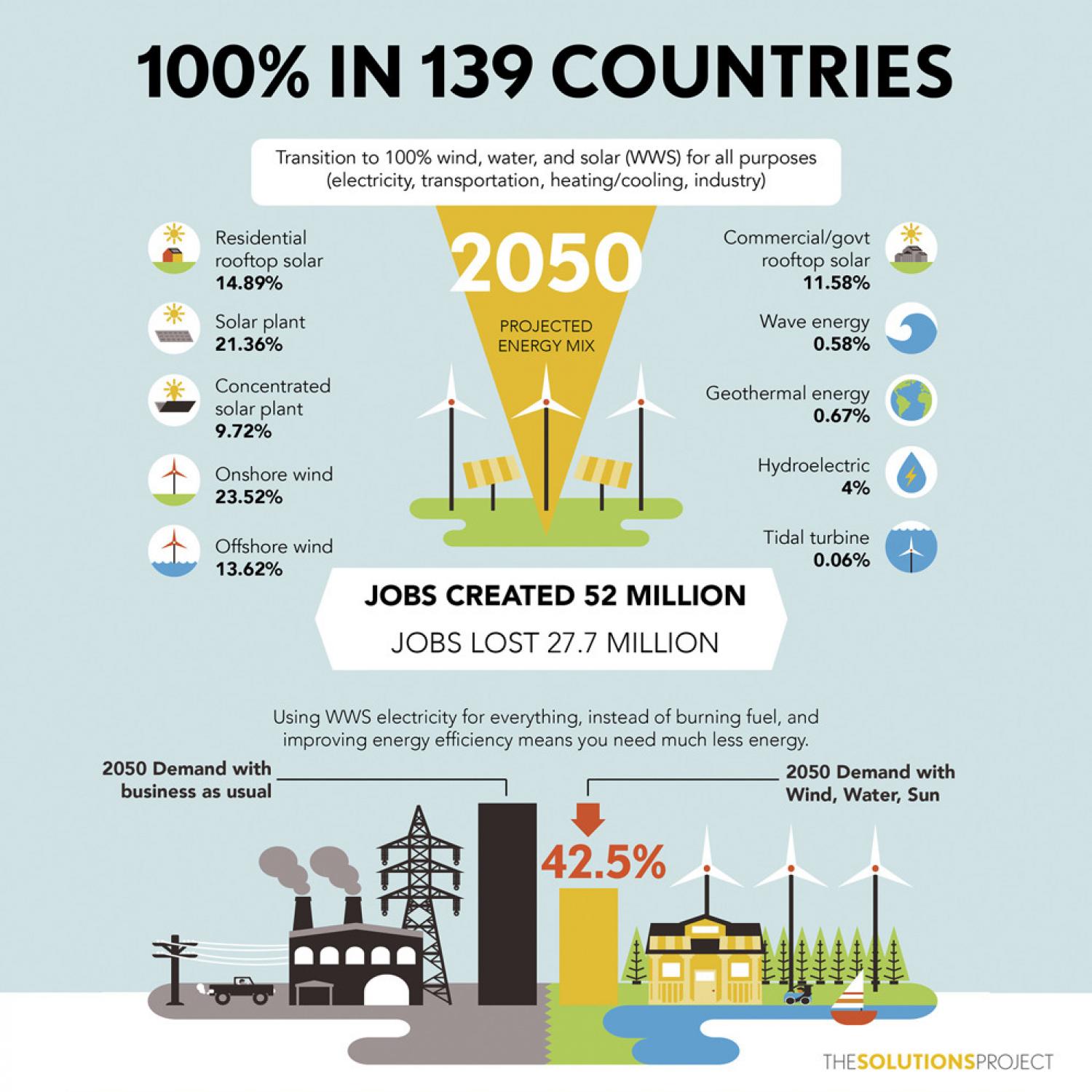
Elsevier, Joule, Volume 1, 6 September 2017
We develop roadmaps to transform the all-purpose energy infrastructures (electricity, transportation, heating/cooling, industry, agriculture/forestry/fishing) of 139 countries to ones powered by wind, water, and sunlight (WWS). The roadmaps envision 80% conversion by 2030 and 100% by 2050. WWS not only replaces business-as-usual (BAU) power, but also reduces it ∼42.5% because the work: energy ratio of WWS electricity exceeds that of combustion (23.0%), WWS requires no mining, transporting, or processing of fuels (12.6%), and WWS end-use efficiency is assumed to exceed that of BAU (6.9%). Converting may create ∼24.3 million more permanent, full-time jobs than jobs lost. It may avoid ∼4.6 million/year premature air-pollution deaths today and ∼3.5 million/year in 2050; ∼$22.8 trillion/year (12.7 ¢/kWh-BAU-all-energy) in 2050 air-pollution costs; and ∼$28.5 trillion/year (15.8 ¢/kWh-BAU-all-energy) in 2050 climate costs. Transitioning should also stabilize energy prices because fuel costs are zero, reduce power disruption and increase access to energy by decentralizing power, and avoid 1.5°C global warming. For the world to reverse global warming, eliminate millions of annual air-pollution deaths, and provide secure energy, every country must have an energy roadmap based on widely available, reliable, zero-emission energy technologies. This study presents such roadmaps for 139 countries of the world. These roadmaps are far more aggressive than what the Paris agreement calls for, but are still technically and economically feasible. The solution is to electrify all energy sectors (transportation, heating/cooling, industry, agriculture/forestry/fishing) and provide all electricity with 100% wind, water, and solar (WWS) power. If fully implemented by 2050, the roadmaps will enable the world to avoid 1.5°C global warming and millions of annual air-pollution deaths, create 24.3 million net new long-term, full-time jobs, reduce energy costs to society, reduce energy end-use by 42.5%, reduce power disruption, and increase worldwide access to energy. We develop energy roadmaps to significantly slow global warming and nearly eliminate air-pollution mortality in 139 countries. These plans call for electrifying all energy sectors (transportation, heating/cooling, industry, agriculture/forestry/fishing) and providing the electricity with 100% wind, water, and solar (WWS) power. Fully implementing the roadmaps by 2050 avoids 1.5°C global warming and millions of deaths from air pollution annually; creates 24.3 million net new long-term, full-time jobs; reduces energy costs to society; reduces power requirements 42.5%; reduces power disruption; and increases worldwide access to energy.
